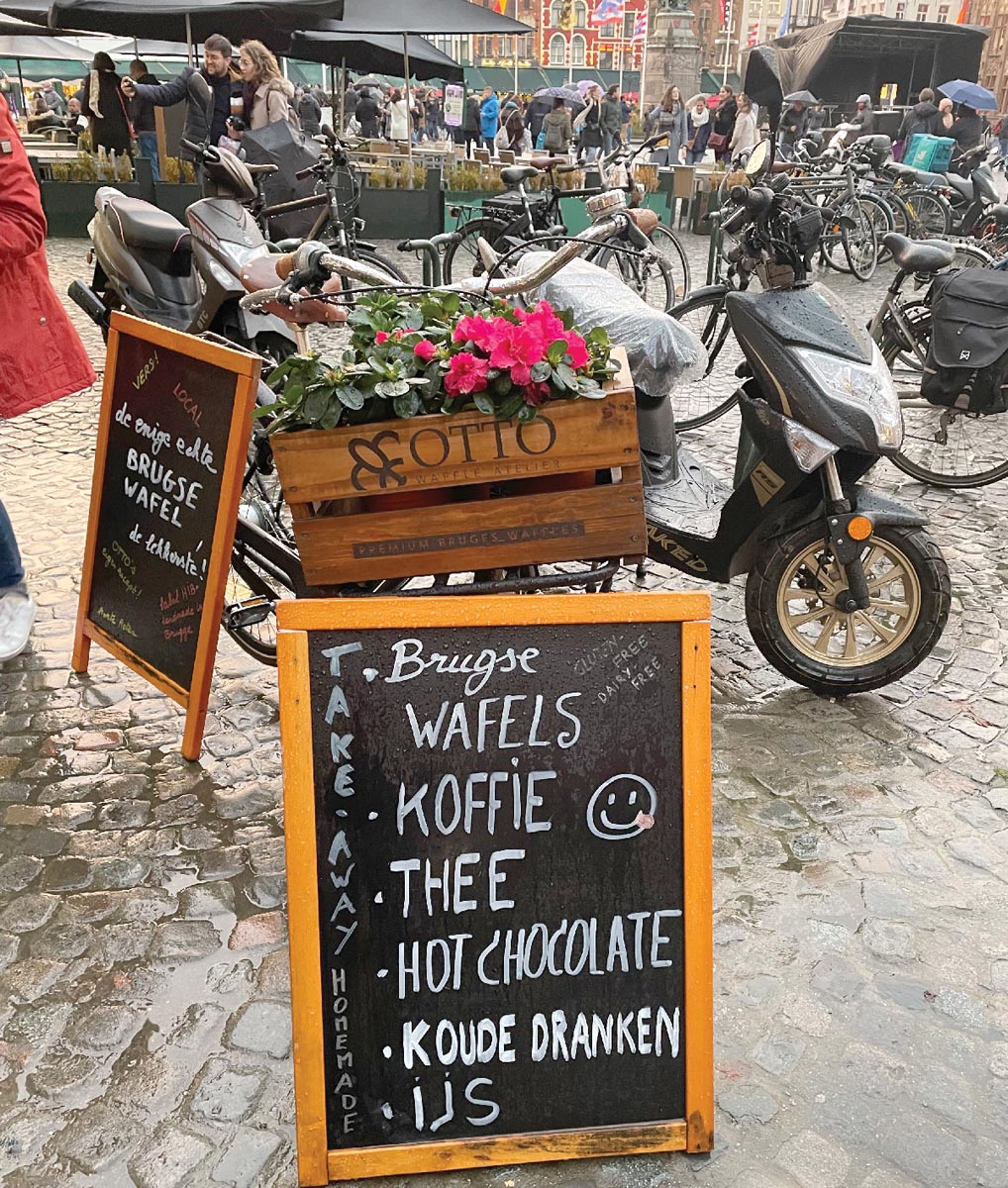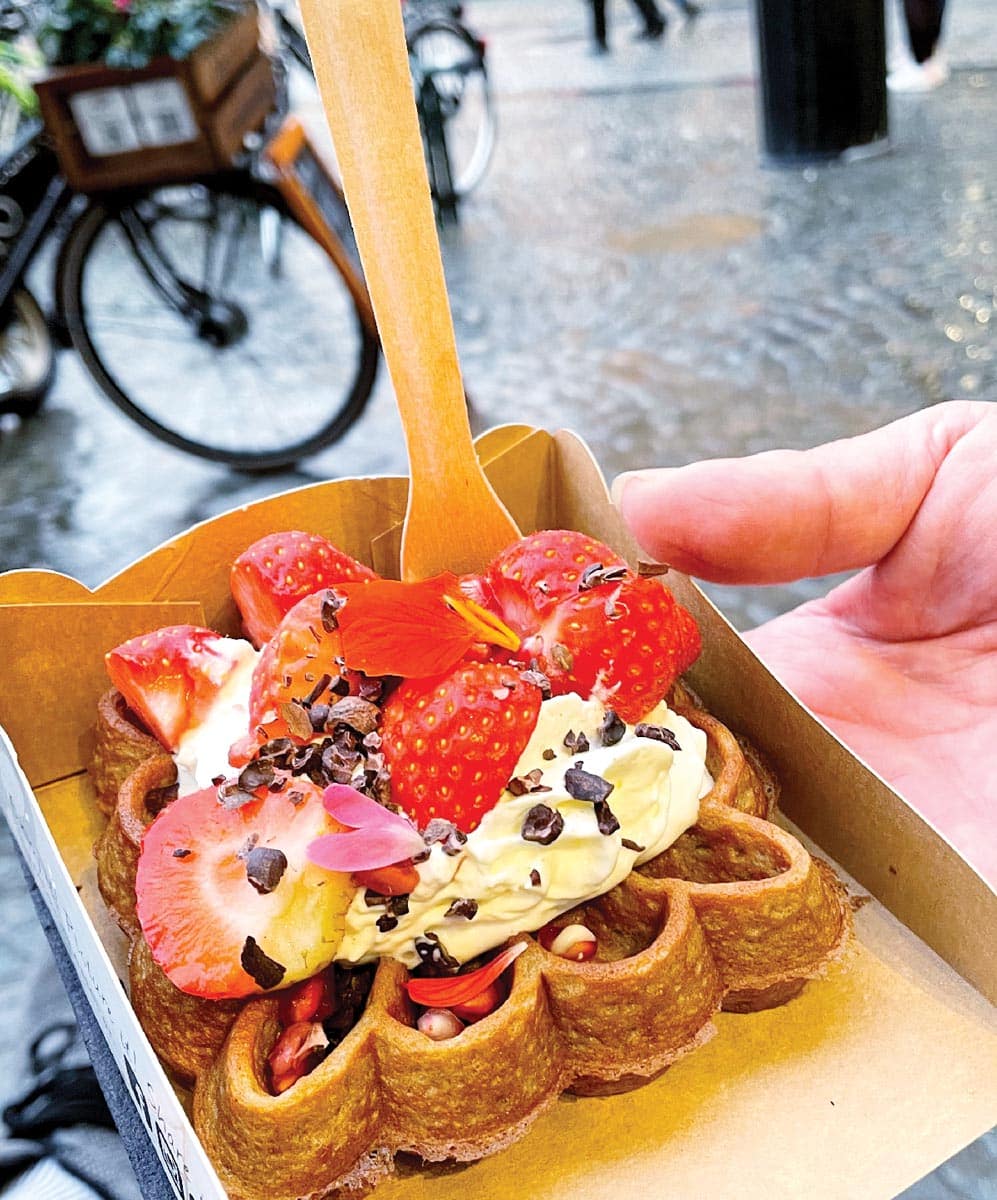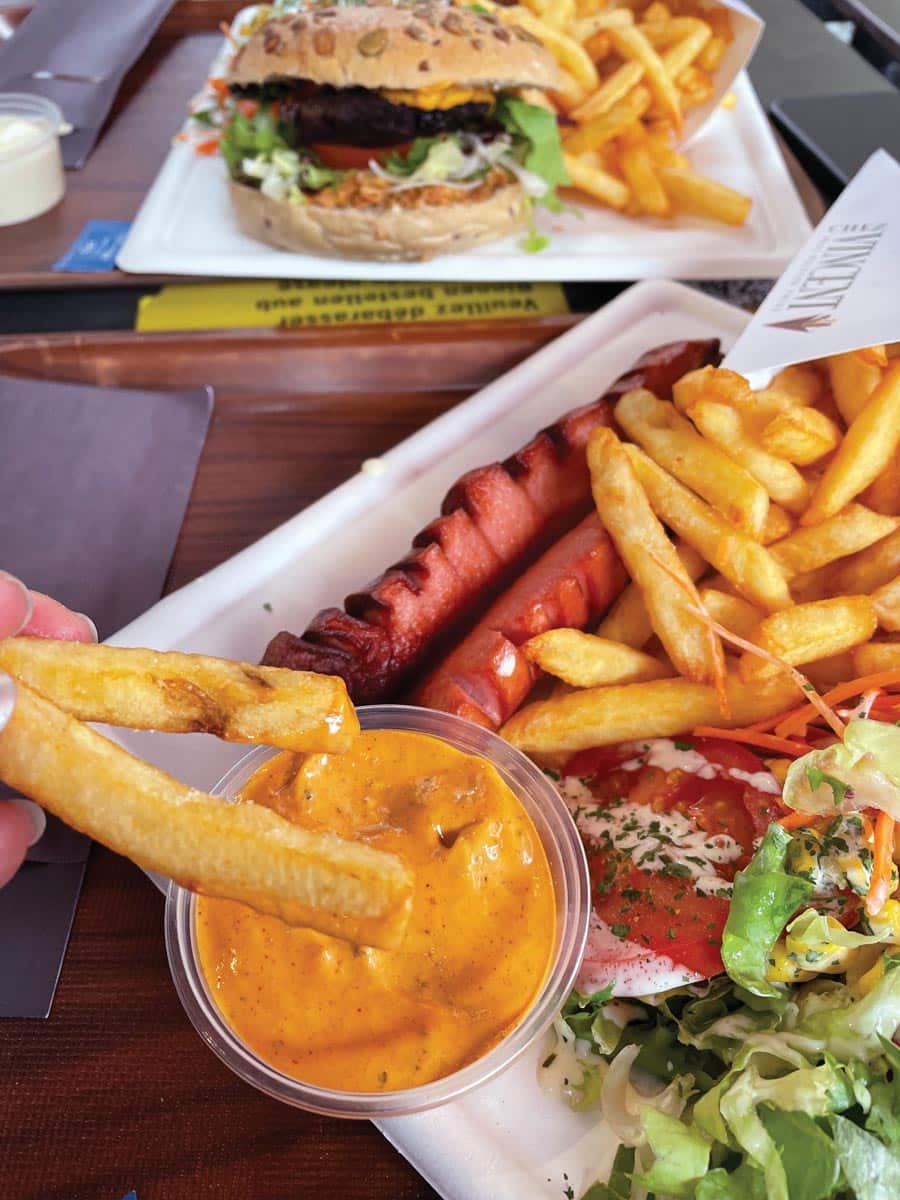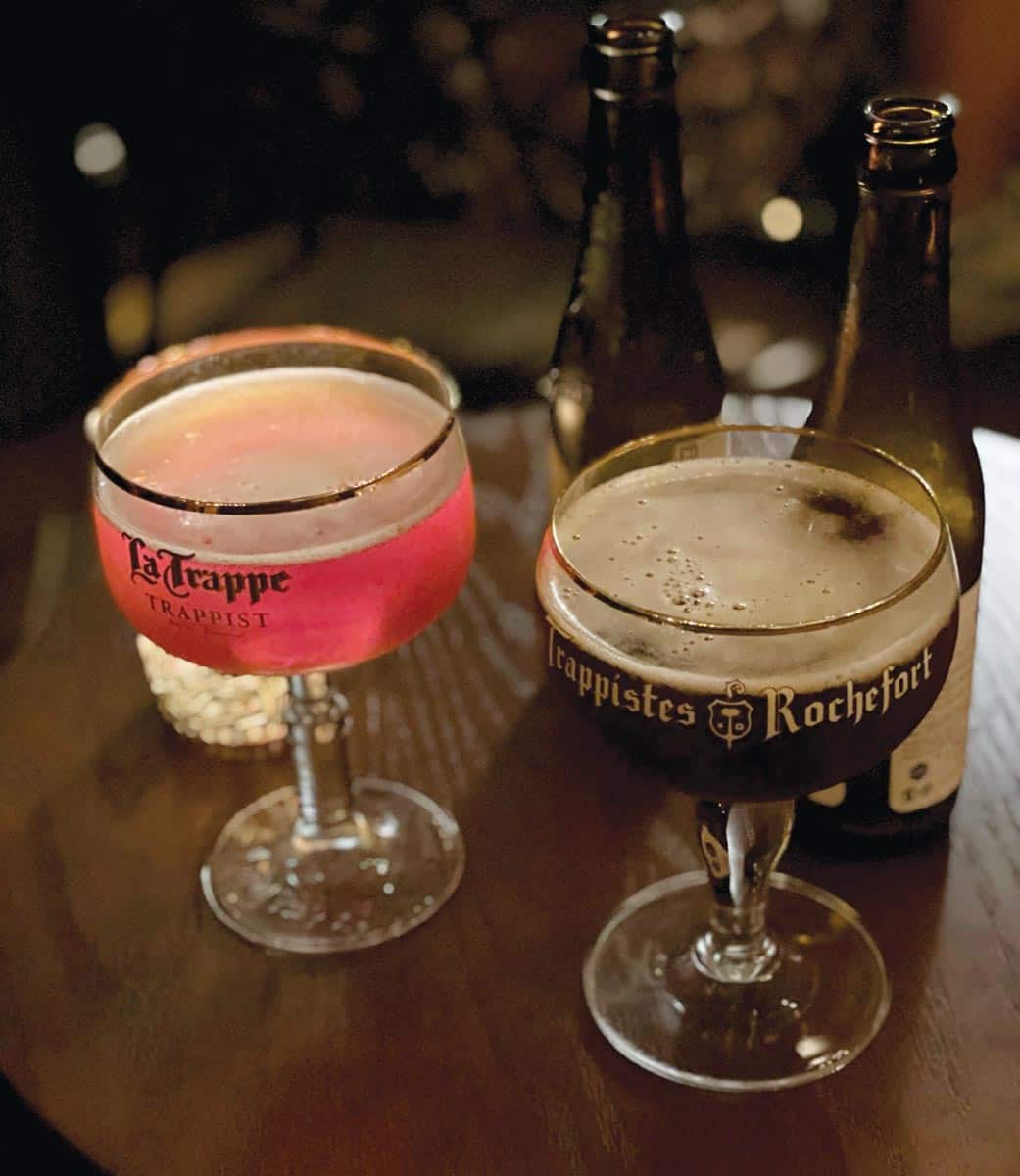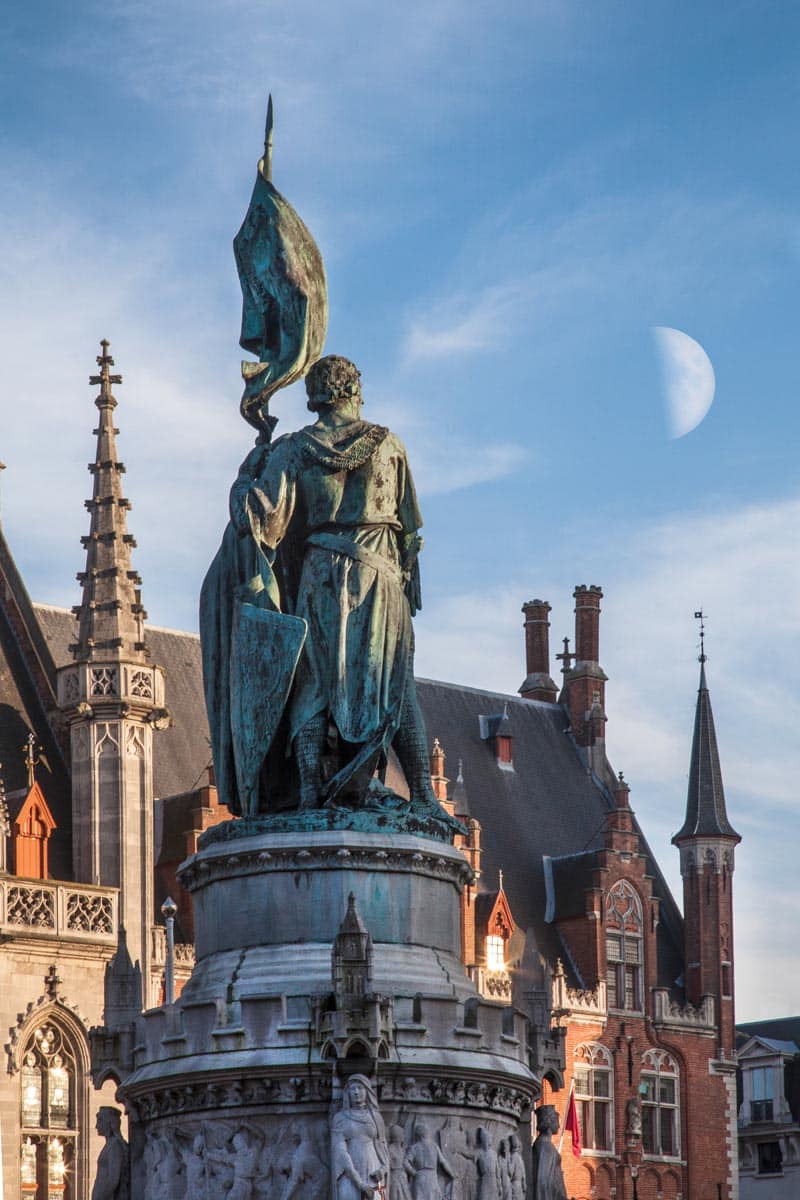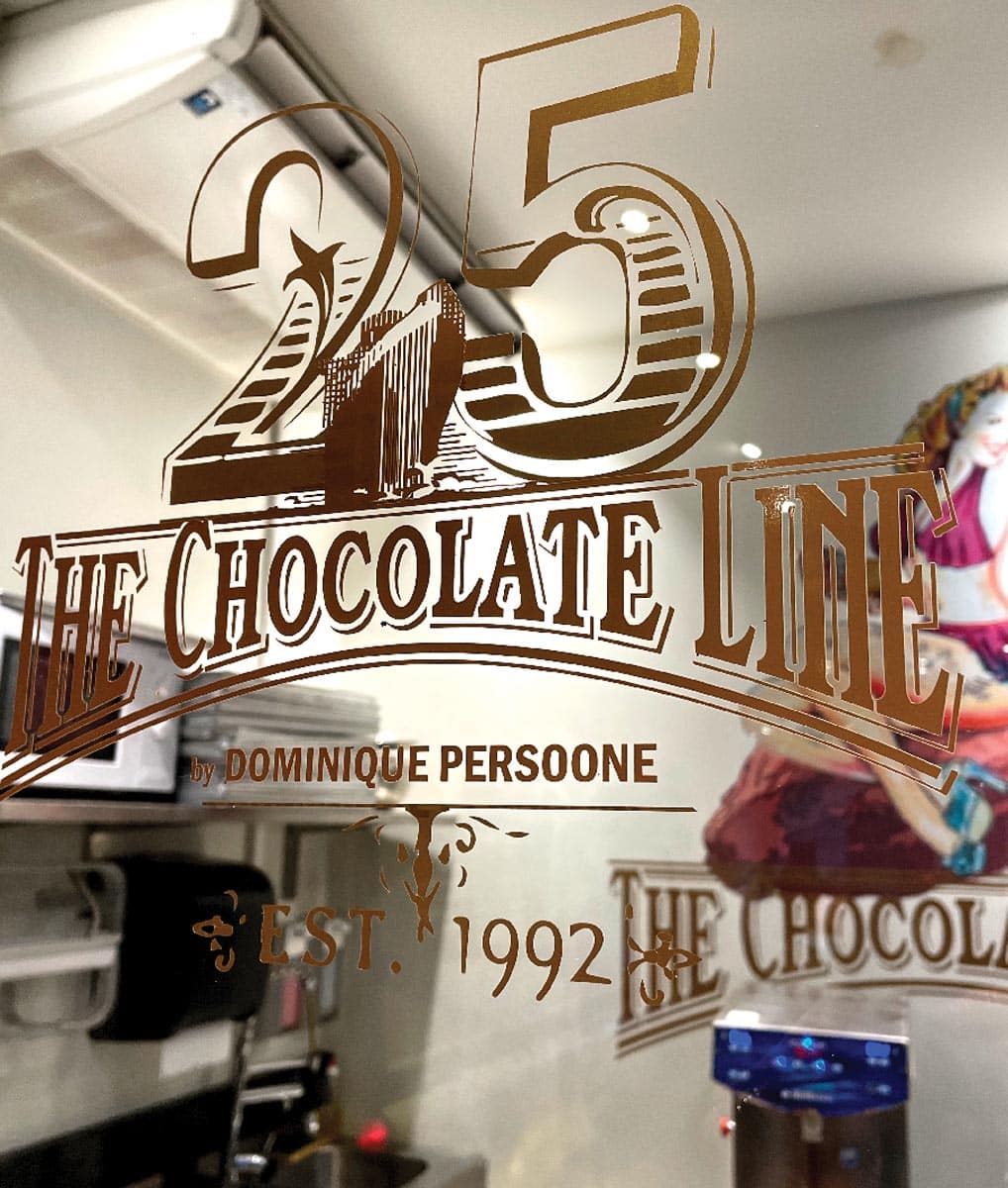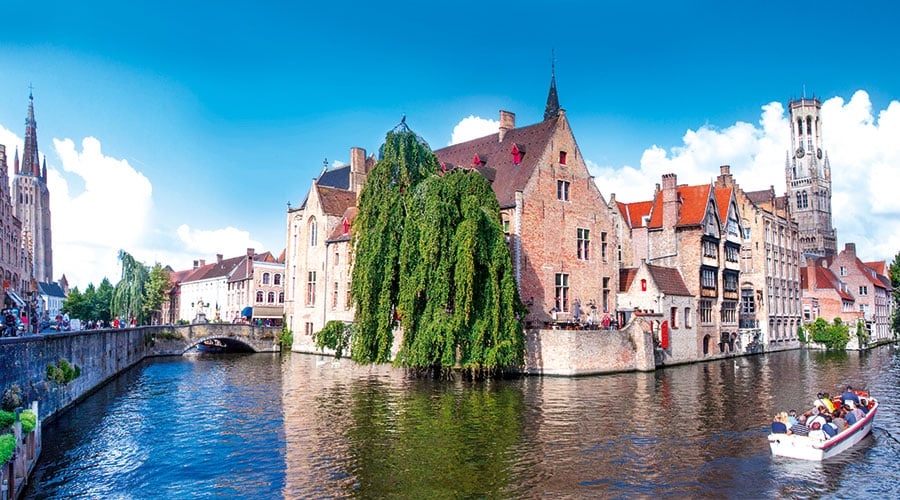
Frites and So Much More
By June Naylor
When it comes to memorable eating and drinking, the picturesque Belgian city of Bruges holds its own against Paris any day
During an extended stay in France, my husband and I enjoyed extraordinary meals in Paris, but diving into some of the best food and drink we’d ever tasted while next door in Belgium was an unexpected delight.
Three days in Bruges — an easy train ride from the French capital — satisfied our cravings for the elegant beers, crispy fries and sublime chocolates for which Belgium is famous; and, just for fun, we knocked off a waffle, too. The bonus? This walkable village comprises a lovely network of cobblestone paths dating to the Middle Ages, boutiques, galleries and museums, including some dedicated to the legacies of Belgian food.
We first viewed the town from the water. Perched on leather-covered benches in an open-air boat, we learned about Bruges history and points of interest from the charming captain as he navigated the canal system, easily switching among five languages (Dutch, German, French, Spanish and English). Weeping willows and storybook brick buildings — their facades festooned with statuary and architectural detail — line waterways, while ancient bridges cross the canals and white swans serenely paddle by.
Visitors unaffected by heights (unlike me) climb 366 steps for views from the Belfort, the 13th-century tower presiding over the Grote Markt square, with its 47-bell carillon chiming all day. The iconic belfry, regarded as key to the town’s designation as a UNESCO World Heritage site, is central to the darkly comic 2008 Colin Farrell film In Bruges.
From both the water and the tower, it’s easy to pick out dozens of churches — many of them art museums that also serve as architectural masterpieces — in the historic center of town. (We considered praying for strength to get through all the epicurean pleasures, but that seemed too much to ask.)
Restaurants and cafes serving Belgian specialties are everywhere; visitors who have more discerning palates should seek places tucked away on little streets off the touristy market square. Snagging a patio table at Chez Vincent, next to the magnificent Saint Saviour’s Cathedral, we had the best frites of our journey.
They are cut from a Dutch heirloom potato variety called bintje (pronounced ben-jee) and sourced from growers visited regularly by the restaurant owners. These starchy spuds are twice-fried, the process for achieving the remarkably crisp texture. Neither super skinny nor chubby, the golden sticks arrived hot and crunchy in a traditional paper cone and were just begging to be dipped into the sauce called andalouse (a semi-spicy blend of mayo, tomato paste, lemon, onion and bell peppers). Served with curry-infused pork sausage and crisp green salad, they were superb.
At De Vlaamsche Pot, a cozy old house on a narrow passageway where we had dinner, short and somewhat stout frites arrived at the table in dramatic fashion, directly from a sizzling-hot pan just off the stovetop. The perfect accompaniment was the special-to-Bruges stoverij, a rich Flemish stew chunky with beef slowly simmered in dark beer.
Many cafes, pubs and restaurants list 300 to 400 Belgian beers on their menus. Credit for the diversity goes to monks who brewed at abbeys in the Middle Ages. The list of Trappist beers served fireside in the romantic little bar called Cafe Rose Red, just a short walk from the market square, include the Trappistes Rochefort 10, a deep chestnut-brown ale with dried fruit and toffee notes.
Among the breweries, we loved Bourgogne des Flandres, dating from 1825, with a beautiful canalside setting and an entertaining bartender whose detailed description of pours was essential for educating newbies. And at Brewery de Halve Maan, in operation since 1856, we savored the signature Straffe Hendrik Brugs Quadrupel, a dark, brick-red brew with rich flavors of honey, apricot and a little clove, perfect for washing down salami, cheese and a pâté made with beer.
During our breaks from beer research, we sampled wine. The chic wine bar Living was the sort one finds all over Paris, complete with couples cuddling on cozy couches while sipping champagne and wines from France, Austria and Belgium. With a lunch of ubiquitous-in-Bruges mussels and crunchy shrimp croquettes at the intimate Bistro de Schilder, we enjoyed an Alsatian pinot gris, a light wine with a fresh complexity.
Conquering the chocolate maze proved more difficult than our other culinary quests, as we found at least three boutiques of sweets on every block. At the highly pedigreed shop called The Chocolate Line, we tasted and learned. Made on-site, the “from tree to bar” cacao artistry of the wares is attributable to local celebrity chef/chocolatier Dominique Persoone, who owns a cocoa plantation in Mexico. An artful mini-museum traces chocolate’s painstaking journey from pods to the house candies infused with rum, saffron, curry, chiles and more. Eye-popping packaging comes from the chef’s fashion designer wife, Fabienne Destaercke.
Hungry for a little history, we checked out the Friet Museum and discovered how the taste treat that originated in Belgium came to be known as “French” fries: During World War I, American soldiers treated to fried potato sticks by French-speaking Belgian farmers erroneously reported the location of the event. More academic potato history led us to an entertaining dancing potato display, along with photos of famous people eating fries (hello, President Obama).
Walking off our sins, we wandered over to see four remaining historic windmills along a canal, then toured an astonishing collection of Flemish primitives, expressionist works and postwar modern art in the beautiful Groeninge Museum. A cool rain fell when we walked back to the square and nibbled on an oat-grain waffle from Otto Waffle Atelier topped with fresh strawberries, sour cream, honey, pomegranate seeds and cocoa nibs, all sprinkled with rose petals.
When the drizzle stopped and a rainbow appeared over the plaza, it seemed an affirmation of the gastronomic fortune we found in Bruges.
THE DETAILS
Bruges Home to fewer than 120,000, Bruges attracts millions of tourists annually. Reached by train (2.5 hours from Paris or 1 hour from Brussels; 5 hours by train and bus from Amsterdam), the town lies in Belgium’s West Flanders region. Dutch is the official language, though many locals also speak fluent English, French or German. Walk or ride rented bicycles anywhere; taxis are available but are needed only for the $15 ride to the train station.
Where to stay
Hotel Van Cleef A 16-room boutique lodging overlooking a canal, this palatial hotel gets high marks for its luxury offerings. Two-night packages with breakfast, champagne and chocolates start at about $675. hotelvancleef.be/en
Hotel Goezeput This former monastery offers unfussy but very comfortable rooms upstairs and a modern bar-salon on the ground floor, from about $83 nightly. hotelgoezeput.be
When to go Chilly and wet in late fall and winter — it’s 10 miles south of the North Sea coastline — Bruges is mild the rest of the year.
What to pack Walking shoes suitable for cobblestone streets are essential.

